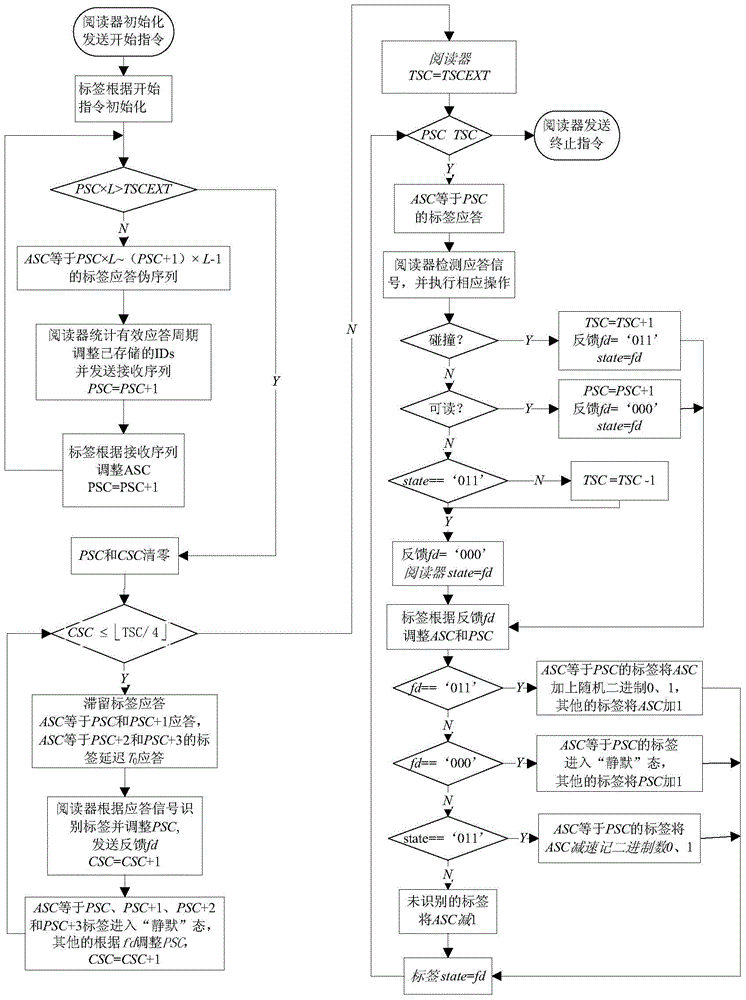Anti-collision method for multi-resolution block RFID tags based on adaptive binary splitting
A self-adaptive binary and RFID tag technology, applied in the direction of sensing record carriers, instruments, computer components, etc., can solve the problems of not making full use of the leaving tag cycle, wasting system resources, and high recognition efficiency, and shorten the total recognition time delay , save system resources, improve the effect of recognition rate
- Summary
- Abstract
- Description
- Claims
- Application Information
AI Technical Summary
Problems solved by technology
Method used
Image
Examples
Embodiment Construction
[0030] The present invention will be further described below in conjunction with the accompanying drawings, but the embodiments of the present invention are not limited thereto.
[0031] The present invention requires the reader (tag) to maintain three counters, namely the terminated slot counter TSC (assigned slot counter ASC), the progress slot counter PSC and the clock slot counter CSC. Such as figure 1 As shown, by controlling three counters, the present invention realizes orderly communication between the reader and the tag, and the specific implementation steps are as follows:
[0032] (1) Reader initialization: The reader estimates the number of incoming tags in this frame based on the number of incoming tags in the previous frame, obtains the extended end time slot TSCEXT, clears the PSC, and then sends a message containing TSC, TSCEXT, and read to the tag. Instructions for starting the device IDs (rRID) and the current frame number (CurF).
[0033] (2) Tag initializ...
PUM
 Login to View More
Login to View More Abstract
Description
Claims
Application Information
 Login to View More
Login to View More - Generate Ideas
- Intellectual Property
- Life Sciences
- Materials
- Tech Scout
- Unparalleled Data Quality
- Higher Quality Content
- 60% Fewer Hallucinations
Browse by: Latest US Patents, China's latest patents, Technical Efficacy Thesaurus, Application Domain, Technology Topic, Popular Technical Reports.
© 2025 PatSnap. All rights reserved.Legal|Privacy policy|Modern Slavery Act Transparency Statement|Sitemap|About US| Contact US: help@patsnap.com

